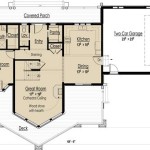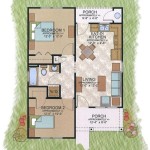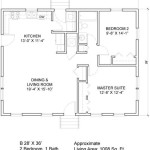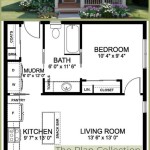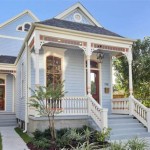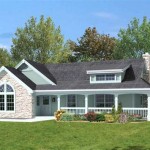Eco house plans are meticulous designs for residential buildings that prioritize environmental sustainability. They incorporate innovative techniques and materials to minimize the structure’s ecological impact, such as using renewable energy sources like solar panels and geothermal systems, and employing sustainable materials like recycled wood and bamboo.
By meticulously considering the environmental implications of every aspect of the house, from its construction to its energy consumption, eco house plans aim to reduce a building’s carbon footprint and promote a more harmonious relationship with the natural world. An example of an eco house plan in practice can be seen in the innovative Earthship Biotecture concept, which utilizes recycled materials and passive solar design to create energy-efficient and environmentally friendly living spaces.
In the following sections, we will delve into the specific design elements and considerations that define eco house plans, exploring the benefits they offer and the practical steps involved in implementing them for a more sustainable and eco-conscious way of living.
Eco house plans prioritize environmental sustainability, incorporating innovative techniques and materials to minimize ecological impact.
- Energy efficiency
- Renewable energy sources
- Sustainable materials
- Water conservation
- Waste reduction
- Indoor environmental quality
- Site orientation
- Landscaping
- Cost-effectiveness
- Lifespan
By considering these factors, eco house plans aim to create environmentally friendly and healthy living spaces that reduce carbon footprint and promote a more harmonious relationship with nature.
Energy Efficiency
Energy efficiency is a crucial aspect of eco house plans. By incorporating energy-efficient features and design strategies, homeowners can significantly reduce their energy consumption and carbon footprint. Here are some key considerations for energy efficiency in eco house plans:
Building Envelope: The building envelope refers to the exterior shell of the house, including walls, roof, windows, and doors. Proper insulation and air sealing are essential to minimize heat loss and air leakage, reducing the need for heating and cooling systems. Eco house plans often utilize high-performance insulation materials, such as cellulose, spray foam, or rigid foam, to achieve optimal thermal resistance. Additionally, energy-efficient windows and doors with low U-factors and high solar heat gain coefficients (SHGCs) can help regulate indoor temperatures and reduce energy consumption.
Heating and Cooling Systems: Eco house plans prioritize energy-efficient heating and cooling systems to maintain comfortable indoor temperatures while minimizing energy usage. Geothermal heat pumps, which utilize the stable temperature of the earth to heat and cool homes, are becoming increasingly popular in eco-conscious designs. Air source heat pumps, which transfer heat between the indoor and outdoor air, are another energy-efficient option. These systems provide both heating and cooling functions, eliminating the need for separate furnaces and air conditioners.
Lighting and Appliances: Energy-efficient lighting and appliances can significantly reduce electricity consumption in a home. LED lighting, which uses significantly less energy than traditional incandescent bulbs, is often incorporated into eco house plans. Energy Star appliances, which meet strict energy efficiency standards set by the U.S. Environmental Protection Agency (EPA), can also help homeowners save energy and reduce their environmental impact.
Renewable Energy Sources: Eco house plans often incorporate renewable energy sources to generate electricity and reduce reliance on fossil fuels. Solar panels, which convert sunlight into electricity, are a popular choice for eco-conscious homeowners. Wind turbines, which harness the power of wind to generate electricity, can also be integrated into eco house designs. By utilizing renewable energy sources, homeowners can further reduce their carbon footprint and contribute to a more sustainable energy future.
Renewable energy sources
Renewable energy sources play a vital role in eco house plans by providing clean and sustainable electricity generation. By incorporating renewable energy systems, homeowners can reduce their reliance on fossil fuels, minimize their carbon footprint, and contribute to a more sustainable energy future.
Solar Photovoltaic (PV) Systems: Solar PV systems are a popular choice for eco house plans, as they convert sunlight directly into electricity. These systems consist of photovoltaic (PV) panels, which are installed on the roof or other suitable areas of the house. The PV panels generate electricity when exposed to sunlight, which can then be used to power the home or feed into the grid. Solar PV systems are a clean and renewable source of energy that can significantly reduce electricity bills and greenhouse gas emissions.
Solar Thermal Systems: Solar thermal systems harness the sun’s energy to heat water for domestic use. These systems consist of solar collectors, which are typically installed on the roof, and a storage tank. The solar collectors absorb sunlight and transfer the heat to a fluid, which is then circulated through the storage tank. Solar thermal systems can provide a significant portion of a home’s hot water needs, reducing energy consumption and greenhouse gas emissions.
Wind Turbines: Wind turbines are another renewable energy source that can be incorporated into eco house plans. These systems utilize the power of wind to generate electricity. Wind turbines are typically installed on towers or other elevated structures to maximize wind exposure. The turbines convert the kinetic energy of the wind into electrical energy, which can then be used to power the home or feed into the grid. Wind turbines are a clean and renewable source of energy that can help reduce reliance on fossil fuels and promote energy independence.
Geothermal Heat Pumps: Geothermal heat pumps utilize the stable temperature of the earth to heat and cool homes. These systems consist of a ground loop, which is buried underground, and a heat pump unit, which is installed inside the home. The ground loop circulates a fluid that absorbs heat from the earth in the winter and releases heat into the earth in the summer. The heat pump unit then transfers the heat to and from the home’s indoor air, providing heating and cooling as needed. Geothermal heat pumps are a highly efficient and environmentally friendly way to regulate indoor temperatures.
Sustainable materials
Sustainable materials play a crucial role in eco house plans, as they minimize the environmental impact of the building throughout its lifecycle. By choosing materials that are sustainably sourced, durable, and energy-efficient, homeowners can contribute to a more sustainable built environment.
Recycled Materials: Recycled materials are an excellent choice for eco house plans, as they reduce the demand for virgin materials and divert waste from landfills. Recycled materials can be used in a variety of applications, including structural framing, insulation, flooring, and countertops. Recycled steel, for example, can be used to create strong and durable structural elements, while recycled glass can be transformed into countertops and tiles. By incorporating recycled materials into eco house plans, homeowners can help conserve natural resources and promote a circular economy.
Renewable Materials: Renewable materials are another sustainable option for eco house plans, as they are derived from renewable resources and can be replenished naturally. Renewable materials include wood, bamboo, cork, and linoleum. Wood is a versatile and durable material that can be used for structural framing, flooring, and cabinetry. Bamboo is a rapidly renewable grass that can be used for flooring, countertops, and furniture. Cork is a natural material that is harvested from the bark of cork oak trees and can be used for flooring, wall coverings, and insulation. Linoleum is a biodegradable and durable material that is made from linseed oil, wood flour, and cork dust.
Low-VOC Materials: Low-VOC (volatile organic compound) materials are an important consideration for eco house plans, as they minimize indoor air pollution. VOCs are chemicals that are emitted from certain building materials, such as paints, adhesives, and carpets. These chemicals can have a negative impact on indoor air quality and human health. By choosing low-VOC materials, homeowners can create a healthier and more sustainable indoor environment.
Water conservation
Water conservation is an essential aspect of eco house plans, as it helps reduce water consumption and protect this precious resource. By incorporating water-saving fixtures and appliances, as well as implementing sustainable landscaping practices, homeowners can significantly reduce their water usage and environmental impact.
- Low-flow fixtures: Low-flow fixtures, such as toilets, faucets, and showerheads, are designed to reduce water consumption without compromising performance. Low-flow toilets, for example, use significantly less water per flush compared to traditional toilets, resulting in substantial water savings over time. Low-flow faucets and showerheads also reduce water usage without sacrificing water pressure or functionality.
- Water-efficient appliances: Water-efficient appliances, such as washing machines and dishwashers, are designed to minimize water consumption during operation. These appliances use advanced technologies and features to reduce water usage while maintaining cleaning performance. Water-efficient washing machines, for instance, use less water per cycle by optimizing water levels and utilizing efficient wash cycles.
- Rainwater harvesting: Rainwater harvesting systems collect and store rainwater for non-potable uses, such as irrigation, toilet flushing, and laundry. These systems typically consist of a rainwater collection system, such as a rooftop or gutter system, and a storage tank. Rainwater harvesting can significantly reduce reliance on municipal water supplies and promote water conservation.
- Xeriscaping: Xeriscaping is a type of landscaping that emphasizes the use of drought-tolerant plants and efficient irrigation practices to minimize water consumption. Xeriscaping techniques include selecting native plants that are adapted to the local climate, using mulch to retain soil moisture, and implementing efficient irrigation systems, such as drip irrigation or soaker hoses.
By incorporating these water conservation measures into eco house plans, homeowners can significantly reduce their water usage, protect water resources, and promote a more sustainable lifestyle.
Waste reduction
Waste reduction is a crucial aspect of eco house plans, as it minimizes the environmental impact of the building and its occupants. By implementing waste reduction strategies, homeowners can reduce their contribution to landfills, conserve natural resources, and promote a more sustainable lifestyle.
- Reduce waste at the source: One of the most effective ways to reduce waste is to reduce it at the source. This can be achieved by choosing reusable products over single-use items, such as reusable shopping bags, water bottles, and coffee cups. Additionally, homeowners can opt for products with less packaging or packaging that is recyclable or compostable.
- Composting organic waste: Composting organic waste, such as food scraps and yard waste, is a great way to reduce the amount of waste sent to landfills. Composting can be done in a backyard compost bin or through a municipal composting program. The resulting compost can be used to enrich soil and reduce the need for chemical fertilizers.
- Recycling and reusing materials: Recycling and reusing materials helps to conserve natural resources and reduce waste. Eco house plans often incorporate designated recycling areas to encourage proper waste sorting and recycling. Homeowners can also reuse materials in creative ways, such as using old clothes for rags or repurposing old furniture.
- Choosing durable and repairable products: Choosing durable and repairable products over disposable items can significantly reduce waste. Durable products are less likely to break or become obsolete, reducing the need for replacements and disposal. Additionally, choosing products that are easy to repair extends their lifespan and reduces waste.
By implementing these waste reduction strategies, homeowners can significantly reduce their environmental impact and promote a more sustainable lifestyle.
Indoor environmental quality
Indoor environmental quality (IEQ) refers to the quality of the air and environment inside a building. It is a crucial aspect of eco house plans, as it directly impacts the health and well-being of occupants.
- Ventilation: Proper ventilation is essential for maintaining good indoor air quality. Eco house plans incorporate strategies to ensure adequate ventilation, such as natural ventilation through operable windows and doors, and mechanical ventilation systems, such as energy recovery ventilators (ERVs) or heat recovery ventilators (HRVs). These systems help to circulate fresh air throughout the home, diluting indoor pollutants and providing a healthier indoor environment.
- Air filtration: Air filtration is another important aspect of IEQ. Eco house plans often include high-efficiency air filters in HVAC systems to remove pollutants from the air. These filters can capture dust, allergens, and other particulate matter, improving indoor air quality and reducing the risk of respiratory issues.
- Moisture control: Controlling moisture levels is crucial for preventing mold and mildew growth, which can have adverse effects on health. Eco house plans incorporate measures to minimize moisture buildup, such as proper insulation, vapor barriers, and moisture-resistant materials. Additionally, exhaust fans in bathrooms and kitchens help to remove excess moisture from the air.
- Non-toxic materials: Choosing non-toxic materials for interior finishes and furnishings is essential for maintaining good IEQ. Eco house plans prioritize the use of low-VOC (volatile organic compound) paints, adhesives, and flooring materials. VOCs are chemicals that can be emitted from building materials and can have negative health effects, such as headaches, nausea, and respiratory irritation.
By incorporating these strategies into eco house plans, homeowners can create healthier and more comfortable indoor environments that promote the well-being of occupants.
Site orientation
Site orientation plays a crucial role in eco house plans by optimizing the building’s relationship with the natural environment. By carefully considering the sun’s path, prevailing winds, and surrounding landscape, architects can design homes that maximize natural light, minimize energy consumption, and create a more comfortable and sustainable living space.
Solar orientation: Solar orientation refers to the positioning of a building to take advantage of the sun’s energy. In the Northern Hemisphere, homes are typically oriented with their primary living spaces facing south to maximize exposure to sunlight. This orientation allows for passive solar heating, which can significantly reduce energy consumption for heating during the winter months. Overhangs and shading devices can be used to control solar heat gain during the summer months, preventing overheating.
Wind orientation: Wind orientation is another important consideration in site orientation. Prevailing winds can be utilized for natural ventilation, reducing the need for mechanical cooling systems. Homes can be positioned to take advantage of prevailing breezes, which can help to circulate air and create a more comfortable indoor environment. Windbreaks and landscaping can be used to redirect or block unwanted winds, reducing energy loss and increasing outdoor comfort.
Views and privacy: Site orientation also influences the views and privacy of a home. Homes can be positioned to maximize desirable views, such as scenic landscapes or water features. Privacy can be achieved by orienting the home to minimize exposure to neighboring properties or by using landscaping to create natural screens.
Overall, careful site orientation in eco house plans can lead to reduced energy consumption, improved indoor comfort, and a more harmonious relationship with the natural environment.
Landscaping
Landscaping plays a vital role in eco house plans, contributing to the home’s sustainability, aesthetic appeal, and connection to the natural environment.
Native plants: Incorporating native plants into the landscaping is an important aspect of eco house plans. Native plants are well-adapted to the local climate and soil conditions, requiring less water, fertilizer, and pesticides. They also provide food and habitat for local wildlife, supporting biodiversity and creating a more resilient ecosystem.
Water-wise landscaping: Water-wise landscaping techniques aim to reduce water consumption while maintaining a beautiful and functional outdoor space. This can be achieved through the use of drought-tolerant plants, efficient irrigation systems, and rainwater harvesting. By choosing plants with low water needs and grouping plants with similar water requirements together, homeowners can minimize water usage and conserve this precious resource.
Sustainable materials: Utilizing sustainable materials in landscaping is another key consideration for eco house plans. Natural materials, such as stone, gravel, and wood, can be used for pathways, patios, and other hardscaping elements. These materials are durable, low-maintenance, and blend harmoniously with the natural surroundings. Permeable paving options, such as gravel or porous concrete, allow rainwater to infiltrate the ground, reducing runoff and promoting groundwater recharge.
Outdoor living spaces: Eco house plans often incorporate outdoor living spaces that seamlessly connect the home to the natural environment. Patios, decks, and screened porches extend the living space outdoors, providing areas for relaxation, dining, and entertaining. These spaces can be designed to take advantage of natural light, shade, and views, creating a comfortable and inviting outdoor experience.
Cost-effectiveness
Eco house plans often carry a reputation for being more expensive than traditional home designs. However, this is not always the case. While some eco-friendly features may involve upfront costs, they can lead to significant long-term savings on energy and maintenance, making eco house plans a cost-effective investment in the long run.
Energy efficiency: Eco house plans prioritize energy efficiency, which can translate into substantial savings on energy bills. By incorporating energy-efficient features such as high-performance insulation, energy-efficient windows and appliances, and renewable energy systems, homeowners can reduce their energy consumption and lower their utility costs.
Durability and longevity: Eco house plans often utilize durable and sustainable materials, which can extend the lifespan of the home and reduce the need for costly repairs and replacements. Sustainable materials, such as sustainably harvested wood, recycled materials, and low-maintenance finishes, are designed to withstand the elements and last for decades, reducing long-term maintenance expenses.
Increased property value: Homes built with eco-friendly features are becoming increasingly desirable in the real estate market. As more homebuyers prioritize sustainability, eco house plans can command a higher resale value, providing a potential return on investment for homeowners.
Overall, while eco house plans may have a slightly higher upfront cost compared to traditional home designs, the long-term savings on energy, maintenance, and potential increase in property value make them a cost-effective and sustainable choice for homeowners.
Lifespan
When considering the lifespan of an eco house plan, several factors come into play. The choice of durable and sustainable materials is crucial for ensuring the longevity of the home. Eco house plans prioritize materials that can withstand the elements and resist deterioration over time. These materials include sustainably harvested wood, recycled metals, and low-maintenance finishes.
Proper construction techniques and adherence to building codes are essential for ensuring the structural integrity and durability of an eco house. Skilled builders who specialize in sustainable construction practices can help create a home that is built to last. Regular maintenance and inspections are also key to extending the lifespan of an eco house. By addressing minor issues promptly and performing regular maintenance tasks, homeowners can prevent small problems from escalating into major repairs.
The design of an eco house plan can also impact its lifespan. Homes that are designed to be adaptable and flexible can more easily accommodate changes in lifestyle and technology over time. This adaptability can extend the lifespan of the home and reduce the need for major renovations or expansions.
Overall, the lifespan of an eco house plan is influenced by a combination of factors, including material selection, construction quality, maintenance practices, and design flexibility. By prioritizing durability, sustainability, and adaptability, homeowners can create eco-friendly homes that stand the test of time.










Related Posts

